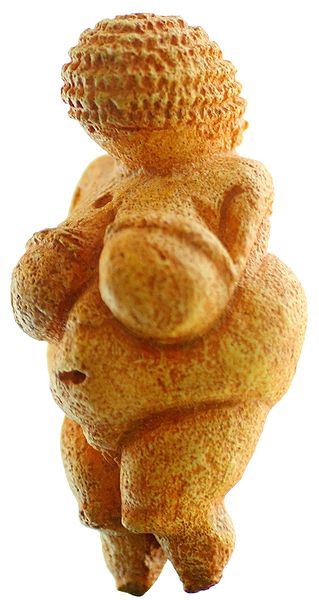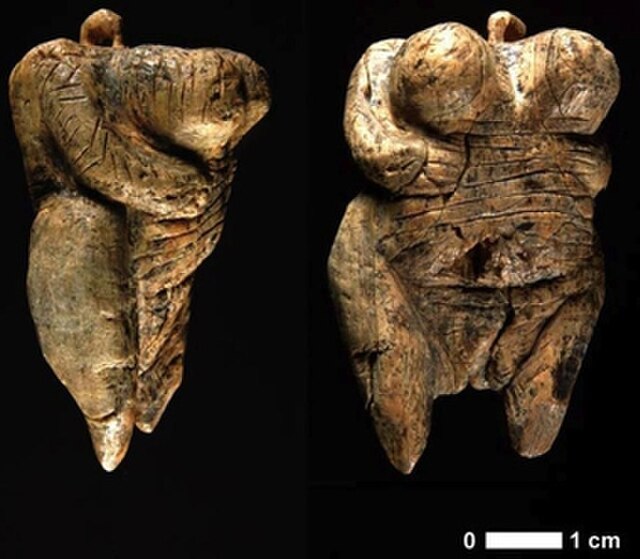A figurine or statuette, is a small, three-dimensional sculpture that represents a human, deity or animal, or, in practice, a pair or small group of them. Figurines have been made in many media, with clay, metal, wood, glass, and today plastic or resin the most significant. Ceramic figurines not made of porcelain are called terracottas in historical contexts.
Chinese porcelain blanc de Chine figure of Guanyin, Ming dynasty
Prehistoric Venus of Willendorf figurine
Dancing Tanagra figurine, Hellenistic terracotta, 2nd-century BC
Minoan praying woman in bronze, 16th century BC
Sculpture is the branch of the visual arts that operates in three dimensions. Sculpture is the three-dimensional art work which is physically presented in the dimensions of height, width and depth. It is one of the plastic arts. Durable sculptural processes originally used carving and modelling, in stone, metal, ceramics, wood and other materials but, since Modernism, there has been almost complete freedom of materials and process. A wide variety of materials may be worked by removal such as carving, assembled by welding or modelling, or moulded or cast.
Venus of Hohle Fels, Germany, oldest known sculpture of a human being, 42.000–40.000 BP
Dying Gaul, or The Capitoline Gaul, a Roman marble copy of a Hellenistic work of the late 3rd century BCE, Capitoline Museums, Rome
Assyrian lamassu gate guardian from Khorsabad, c. 800–721 BCE
Michelangelo's Moses, (c. 1513–1515), San Pietro in Vincoli, Rome, for the tomb of Pope Julius II








